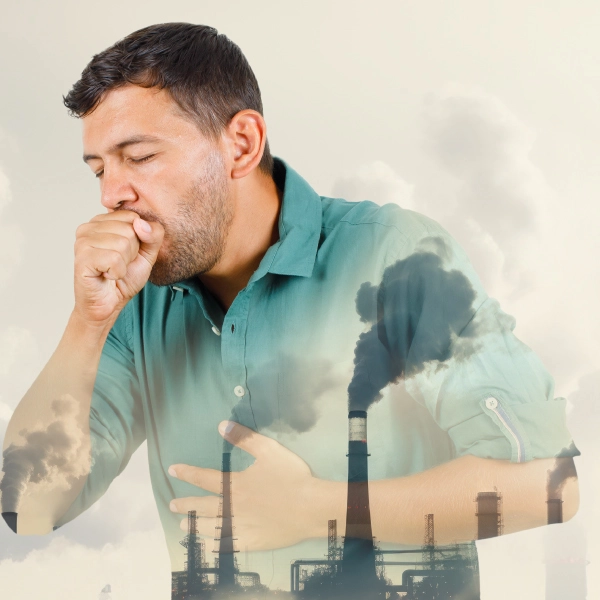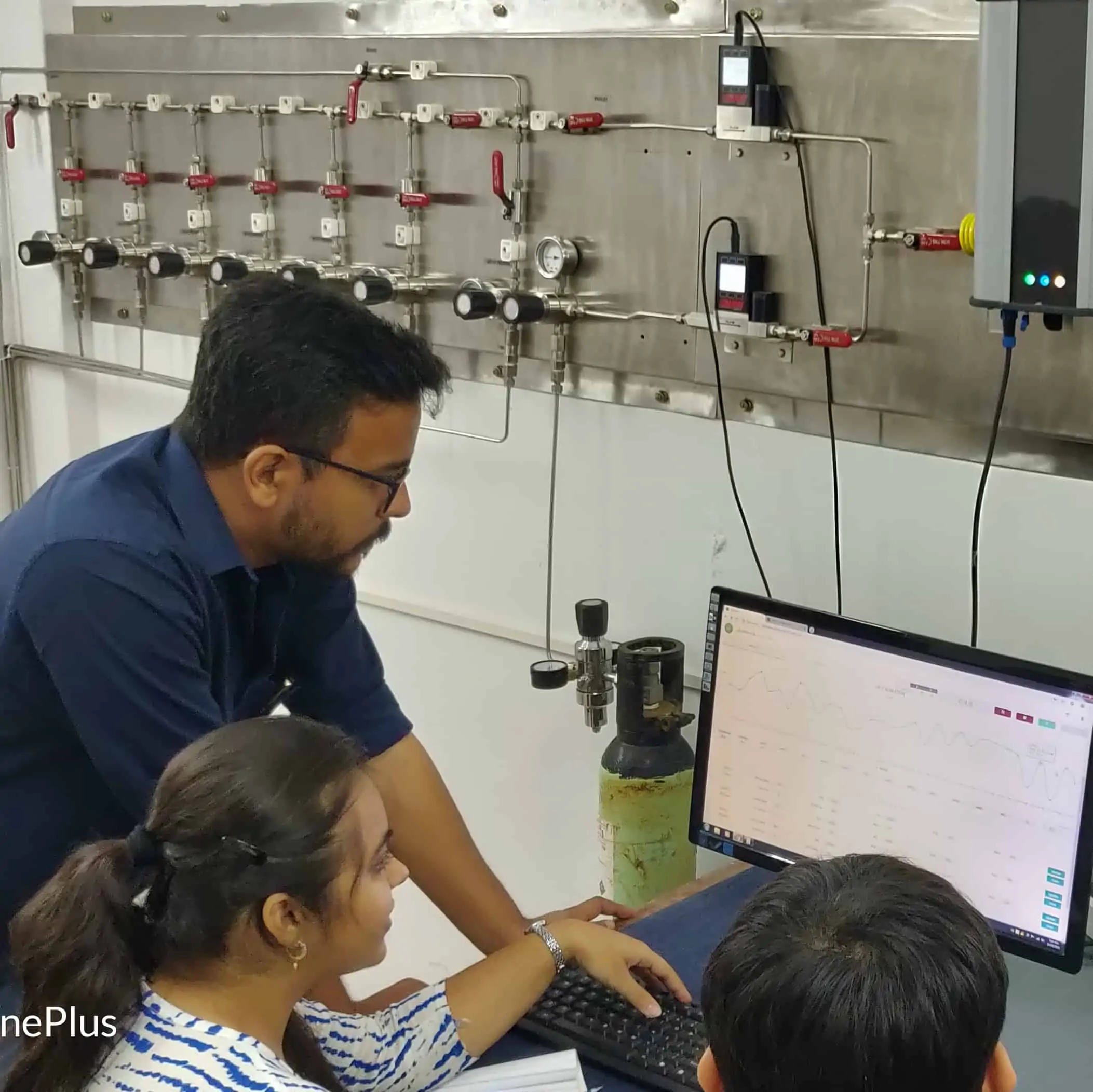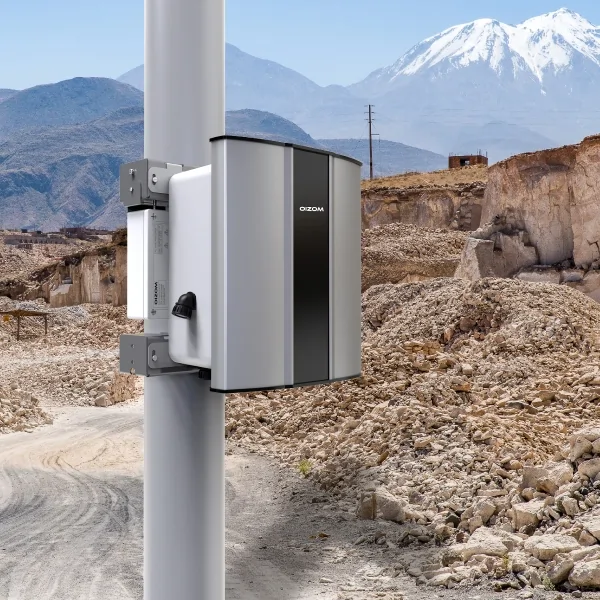Natural dust has always been present in our planet’s atmospheric layer. It is present in the layer troposphere and stratosphere. Moreover, The majority of the interplanetary dust particles (IDPs) collected in the stratosphere belong to one of three major classes, the first two dominated by the anhydrous minerals olivine and pyroxene and the third by hydrous layer-lattice silicates. Dust storms turn in the wake of windstorms, wildfires leave an ashy history, and volcanic eruptions rise with powdered plums. These are just a few of nature’s dust architects. Humanity’s hand is equally everywhere, with automobile emissions, industrial activity, and the never-ending hustle of construction all contributing to the dusty tapestry that envelops our planet.
Dust marks its domain in the environment beyond the limits of human physiology. It hazes the air, reducing vision; it harms vegetation; and it affects the cleanliness of our water reservoirs. Dust is a misleading agent in climate dynamics; absorbing sunlight and heating the atmosphere while reflecting rays and cooling it is a problematic factor in the climate enigma. In this appeal to environmental leadership, We encourage you to consider the dust not as a future storm on your horizon but as a current hurricane that necessitates our immediate and concerted effort. Dust is a common adversary of our health and the life of the Earth, but it is one that we can and must combat with urgency and unity.
How is dust created?
Hairs, dead skin cells, body parts of dead insects, dust mites, bacteria, textile fibres, animal dander, food particles, pollen, and plastic fragments are all dust components. Dust also accumulates toxins from the environment, which might have a more significant influence on your health than you may realise.
Mechanical Processes of Dust Creation:
- In the mechanical processes, dust emerges from the fragmentation of larger entities into minuscule particles. A prime example is observed in industries where materials are mechanically altered.
Natural Processes of Dust Creation
- Nature, too, plays its role in the creation of dust through processes that may seem gradual but have a significant cumulative impact:
Types of Dust Particles
Dust particles, small as they may seem, play a significant role in environmental health and air quality issues. These particles are not all created equal and vary in size, origin, and impact. They are generally classified into three main categories: fine, coarse, and ultrafine particles.
Fine Particles
Fine particles, often called PM2.5, have a diameter of fewer than 2.5 micrometres. These particles are particularly insidious due to their ability to bypass the nose and throat and penetrate deep into the lungs and even into systemic circulation. They originate from natural and anthropogenic activities, with human-induced sources being the most concerning due to their prevalence and health implications.
Examples of fine particles include:
- Soot: Produced from the incomplete combustion of fossil fuels.
- Smoke: Generated from wildfires and residential wood burning.
Pollen: Released from plants and trees, contributing to allergenic effects. - Dust from construction sites: Containing a mixture of soil, particulates from building materials, and potentially toxic industrial compounds.
- Dust from unpaved roads: Often loaded with soil particles and vehicle emissions.
Coarse Particles
Coarse particles, identified as PM10, range between 2.5 and 10 micrometres in diameter. They are more significant and thus less likely to penetrate as deeply into the lungs as PM2.5 but can still pose significant health risks.
Familiar sources of coarse particles include:
- Sea salt: Especially near coastal areas.
- Soil dust: Upturned by wind and human activities such as agriculture.
- Dust from construction sites and unpaved roads: Similar to fine particles but in larger form.
Ultrafine Particles
Ultrafine particles have a diameter of less than 0.1 micrometres. They are the most sophisticated, bypassing the body’s defence mechanisms and directly entering circulation. This permits them to travel throughout the body and may create systemic health problems.
Sources of ultrafine particles include:
- Combustion particles: Emitted from vehicles and industrial processes.
- Fumes from metalworking: Resulting from high-temperature processes.
- Dust from woodworking and cooking: Particulates created from mechanical and thermal processes.
- Dust from tobacco smoke: Containing a wide array of carcinogenic and toxic substances.
Common Sources of Dust
Dust, a minor feature of daily life, is a complicated mixture of particles from various sources affecting air quality, health, and environmental circumstances. Understanding where dust comes from is critical to controlling its influence on our lives and the environment. This blog post goes into the most frequent sources of dust, distinguishing between those that are naturally occurring and those that are caused by human activity.
Natural Sources
The natural world is a primary contributor to dust production. Several phenomena play a part in this:
- Windstorms: In arid regions, windstorms can lift vast amounts of dust from the ground, carrying it over long distances.
- Wildfires: These events can send ash and fine particles high into the atmosphere, dispersing it far from the source.
- Volcanic eruptions: Volcanic ash is a type of dust created during eruptions, which can have global impacts.
- Pollen: A natural and seasonal source of dust, pollen can affect air quality and health, particularly for those with allergies.
- Sea salt: Ocean spray can form fine salt particles contributing to atmospheric dust loads.
- Soil erosion: This process is incredibly potent in dry climates, where vegetation is sparse, and the land is exposed.
Human-Related Sources
Human activity is a significant and growing source of dust particles:
- Vehicle emissions: The combustion engines release fine dust particles, contributing to urban air pollution.
- Industrial emissions: Factories and industrial processes emit dust that varies in composition, including potentially toxic heavy metals.
- Construction activities: These operations create dust through:
- Crushing and grinding materials
- Sandblasting and other forms of blasting
- Abrasion of surfaces
- Comminution, which involves reducing solid materials from one average particle size to a smaller average particle size
- Agricultural activities: Tilling, harvesting, and even the movement of livestock stir up dust particles into the air.
- Wood burning: Both outdoor and indoor wood burning release particles contributing to dust levels.
Indoor Sources
Inside our homes, the sources of dust are diverse and ever-present:
- Dead skin cells: Humans naturally shed skin, which adds to the household dust.
- Pet dander: Similar to humans, pets shed skin and fur, contributing to indoor dust.
- Dust mites: These microscopic organisms feed on organic detritus, such as flakes of shed human skin and flourish indoors.
- Fabric fibres: Textiles and upholstery shed fibres that become part of the indoor dust ecosystem.
- Tracked-in soil: Dirt and soil from outdoors can be brought inside on shoes and clothing.
- Construction dust: Renovation and building within homes can introduce a range of dust particles.
Outdoor Sources
Beyond our homes, dust sources are widespread:
- Pollen and sea salt: As with natural sources, these contribute to the outdoor dust mix.
- Soil erosion: Human land use can exacerbate soil erosion, increasing the dust released into the atmosphere.
- Vehicle and industrial emissions: They contribute significantly to outdoor dust, especially in urban and industrialised areas.
Awareness of these sources allows us to take preventive measures, such as regular cleaning with HEPA-filter-equipped vacuums, using air purifiers, maintaining vegetation cover to reduce soil erosion, and implementing air quality controls like Oizom Air Quality monitors on industrial processes. Personal choices, such as using public transportation to reduce vehicle emissions and employing sustainable agricultural practices, also make a difference.
The Process of Dust Creation
Dust creation is an intricate process that occurs through both natural phenomena and mechanical actions, often resulting from human activities. It is critical in shaping environments and affecting ecological and health systems. This blog post will examine the various processes of dust creation, delving into the specifics of both mechanical and natural origins.
Process dust, or industrial dust, is produced during manufacturing or production. Cutting, drilling, grinding, or sawing, for example, all make dust. It can also form from materials, chemicals, or additives utilised in the manufacturing process, such as flour, sugar, and pharmaceuticals. Welding and plasma cutting generates very minute particles, fumes, and smoke. To maintain employee health and safety, dust, remarkably flammable dust, must be appropriately filtered and enclosed. Metals and chemicals in industrial dust can be dangerous if inhaled or come into touch with the skin. Furthermore, some types of process dust are explosive, which can cause explosions and fires in the workplace if not managed appropriately.
Mechanical Processes
In the realm of human activity, several mechanical processes contribute to the generation of dust:
- Crushing: Utilised extensively in mining and construction, the crushing process breaks down large rocks or clumps of soil into finer particles. The action of forceful impacts fractures these larger entities, scattering smaller dust particles into the surrounding environment.
- Grinding: In numerous industries, grinding is a commonplace procedure for creating powders and delicate particulate matter from larger solids. The friction and wear between materials and grinding surfaces liberate fine dust into the air.
- Blasting: A high-energy process used in demolition, cleaning, and mining, blasting dislodges surface material using liquid or air pressure, producing a plume of dust particles.
- Abrasion: This gradual process of surface wear involves the scraping or wearing down materials through continuous contact with abrasive surfaces or substances, generating dust over time.
- Comminution: An umbrella term for methods that reduce particle size, comminution includes crushing, grinding, and other techniques. It is a primary source of dust in industries ranging from agriculture to pharmaceuticals.
Natural Processes
The natural environment also has its mechanisms for dust production:
- Weathering: Natural weathering involves the breakdown of rocks and soil through environmental elements like water, wind, and
- temperature changes. This process gradually disintegrates materials into finer particles, contributing to the dust in the atmosphere.
- Erosion: Wind, water, and glacial movements wear away at the Earth’s surface, transporting soil and debris. When these particles are light enough, they are lifted into the air, becoming part of the dust cycle.
- Deforestation: The removal of trees exposes soil to the elements. Without the protective cover of vegetation, the ground is more susceptible to wind erosion, leading to increased dust production.
- Desertification: This process transforms arable land into deserts, often exacerbated by unsustainable agricultural practices, overgrazing, and climate change. As vegetation disappears, the bare soil is more easily picked up by wind, escalating dust generation.
- Volcanic Eruptions: One of the most dramatic natural dust sources, volcanic eruptions emit tons of ash and rock into the atmosphere. This dust can circulate globally and profoundly impact climate and air quality.
The Implications of Dust Creation
The creation of dust has a multitude of implications for both the environment and human health. Dust particles can carry nutrients across continents, contributing to the fertilisation of remote ecosystems. However, they can also transport contaminants and pathogens. Fine dust particles, especially those resulting from human activities, can penetrate the lungs and bloodstream, leading to respiratory issues, cardiovascular disease, and other health problems.
Health Implications
The pervasive nature of dust in our environment belies its potential danger, often leading to serious health consequences that can affect millions globally. This silent and present threat, while commonly dismissed as a mere nuisance, can be responsible for an array of health issues ranging from mild irritations to chronic diseases and even life-threatening conditions.
Respiratory Complications
- The most immediate and prominent health effects of dust are experienced in the respiratory system. Particulate matter (PM), especially fine particles with a diameter of fewer than 2.5 micrometres (PM2.5), can infiltrate the deepest regions of the lungs, causing inflammation and exacerbating or even initiating respiratory conditions such as asthma, chronic bronchitis, and emphysema. The symptoms triggered by these particles are not limited to but include coughing, wheezing, shortness of breath, and, in severe cases, acute respiratory distress.
The World Health Organization (WHO) reported that, as of 2022, an estimated 4.1 million deaths annually were attributable to respiratory diseases, a substantial number of which were linked to particulate matter pollution, including dust.
Cardiovascular Diseases
- Beyond the lungs, dust particles can traverse into the bloodstream, posing a threat to cardiovascular health. Once in the circulatory system, these particles contribute to the development of vascular inflammation and atherosclerosis. The accumulation of plaques in the arteries is a precursor to more severe conditions like heart attacks and strokes. Research in “Environmental Research” in 2022 underscored the grim correlation between long-term dust exposure and elevated mortality rates due to cardiovascular diseases.
Cancer Risks
- The carcinogenic potential of dust should not be understated. Dust can be a carrier for various cancer-causing agents, including polycyclic aromatic hydrocarbons (PAHs), which have been shown to induce mutations in DNA that may result in cancers such as lung cancer. Acknowledging the grave implications, the International Agency for Research on Cancer (IARC) classified outdoor air pollution, which encompasses dust, as a carcinogen in 2022.
Additional Health Concerns
While respiratory and cardiovascular issues, along with cancer risks, are at the forefront, the impact of dust does not end there. Other health problems associated with dust exposure include:
- Eye irritation and conjunctivitis
- Dermatological conditions like contact dermatitis
- Allergic reactions, often exacerbated by dust mites and pollen carried in dust
- Immune system disorders potentially triggered by continuous exposure to dust-borne pathogens and toxins
Mitigation Strategies
Mitigating the health impacts of dust involves a multifaceted approach, including:
- Regular cleaning of living and workspaces to limit dust accumulation.
- Avoid smoking, which can exacerbate the detrimental effects of dust inhalation.
- Wearing protective masks in environments with high dust concentrations.
- Monitoring air quality forecasts and minimising outdoor activities during high pollution alerts to reduce exposure to ambient dust.
By adopting such preventive measures, individuals can significantly decrease the likelihood of experiencing the adverse health effects associated with dust exposure.
Conclusion
As an environmental expert, it is alarming to consider how dust influences and, at times, undermines the quality of the air we breathe, the climate we depend on, and the ecosystems that sustain us. Simultaneously, the relentless expansion of human populations intensifies land use pressures, leading to deforestation and desertification conditions ripe for dust production.
In response to this growing crisis, we are driven to act. To mitigate the implications of dust, we must pivot towards sustainable energy, halt deforestation, and embrace land management practices that prioritise ecological balance. Individually, we can take pragmatic steps to protect ourselves, such as utilising masks in dusty environments and installing air quality monitors. Let us remember the potential of cooperation in addressing the omnipresent threat of dust. It is a call to stewardship and responsible living that we must hear for our shared future, not just an environmental concern.
FAQs
Outdoor dust enters indoor environments through multiple avenues:
- Open doors and windows: They act as gateways for outdoor air and dust particles to move inside.
- Ventilation systems: These systems circulate air and can inadvertently introduce dust from outside.
- Clothing and pets: Dust adheres to clothing and animal fur, then transported indoors.
- Cracks and e: Small openings in a building’s structure allow fine dust particles to infiltrate.
- Activities: Actions like sweeping or shaking out linens can stir outdoor dust into the air, enabling it to drift inside.
Industrial operations contribute to airborne dust through:
- Emissions: Factories and power plants release particulate matter during fuel combustion.
- Material processing: Activities like grinding and cutting in manufacturing emit dust.
- Material transport: Moving bulk materials can disturb dust, sending it airborne.
- Construction and demolition: These sites generate dust from earthmoving and handling of construction materials.
Dust pollution affects the environment in several ways:
- Vegetation: Dust settling on leaves can impede photosynthesis and harm plant health.
- Water systems: Dust particles can pollute water bodies, affecting clarity and aquatic life.
- Ecosystems: Changes in nutrient balance due to dust deposition can disrupt ecosystem dynamics.
- Snow and ice: Dust accelerates melting by increasing sunlight absorption on snow and ice surfaces.
- Air quality and visibility: High dust levels compromise air purity and reduce visibility, impacting human activities and health.
- Climate change: Dust can influence climate patterns by modifying solar radiation absorption and scattering.
These FAQs are informed by the statistics and research from credible sources like the WHO, EPA, CDC, “Environmental Research” journal, and IARC, underscoring the critical health and environmental consequences of dust pollution.






